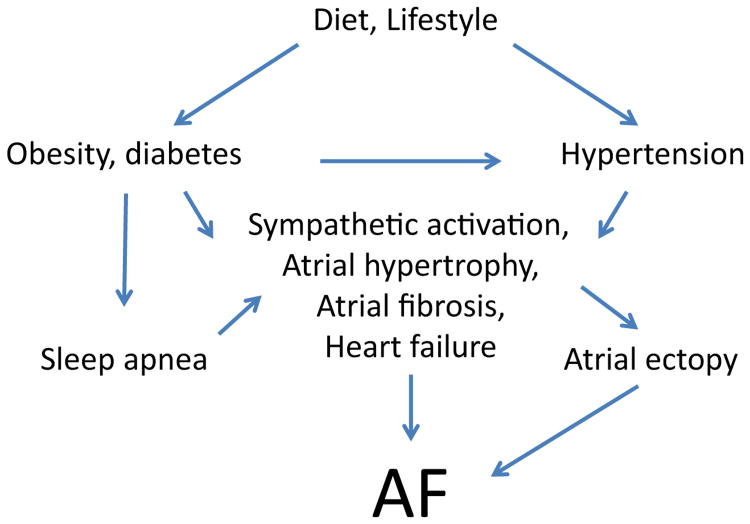Figure 2.
Modifiable risk factors promote a substrate for AF. This figure illustrates the interactions of modifiable risk factors that lead to AF. Clinical and translational studies are needed to test the hypothesis that AF incidence and burden can be reduced by interventions that reduce the burden of patient-specific modifiable risk factors. Nonmodifiable risk factors (aging, genetics, etc) can further modulate the influence of the above risk factors on the development of AF.

